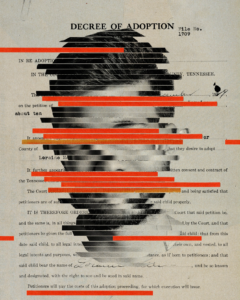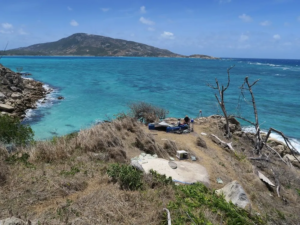Deb Haaland is pushing for a federal reckoning with what the U.S. did to Native Americans. But she cannot be alone in her mission.
On Tuesday, Interior Secretary Deb Haaland revealed at the National Congress of American Indians’ annual midyear conference that the federal government, led by her department, will “undertake an investigation of the loss of human life and the lasting consequences” of federal Indian boarding schools. The announcement comes on the heels of a continent-shaking discovery made three weeks ago by the Tk’emlúps te Secwépemc First Nation, which found the remains of 215 Indigenous children buried in a mass grave outside of Kamloops Indian Residential School in British Columbia, Canada. That horrific announcement was followed by another on Wednesday evening, when Cowessess First Nation revealed that it had discovered 751 unmarked graves at Marieval Indian Residential School in Saskatchewan. In the wake of the discoveries, Indigenous leaders in Canada and the United States called for more accountability and transparency from the settler governments that perpetrated these acts, as well as the religious institutions that often welded themselves to the schools’ assimilationist missions.
Though these boarding schools represent an undeniable atrocity, their history is not common knowledge among non-Indigenous Americans. These schools were set up by the American and Canadian governments, in partnership with various Christian denominations, during the late nineteenth century, and expanded until the mid-twentieth century. Across both nations, their design was sinister in intent and in practice, following the infamous “Kill the Indian, save the man,” creed coined by Richard Pratt, the founder of Pennsylvania’s Carlisle Indian Industrial School. What this slogan meant in practice was that schools and their instructors sought to strip Indigenous youth of their languages, their traditions, and their lives, if necessary, so as to streamline the systematic theft of land and resources from Indigenous nations. They were the culmination of the practices previously perfected in the missions and forts established by local governments and Christian leaders. Boarding schools were the colonizers’ most efficient attempt at cultural genocide—a harrowing truth given that many survivors of these schools, and some of the schools themselves, are still alive today.
The discovery of Indigenous children’s bodies at Kamloops has presented yet another opportunity for reckoning and self-reflection for the colonial powers. Unsurprisingly, it has been Indigenous officials within both governments who have led the way on these fronts. A week after the Kamloops discovery, Haaland, a citizen of the Laguna Pueblo and the first Native official appointed to a Cabinet position, wrote an op-ed in TheWashington Post in which she shared that her grandparents were taken away from their homes as children. “We have a generation of lost or injured children who are now the lost or injured aunts, uncles, parents, and grandparents of those who live today,” Haaland observed, recounting the experience of her grandmother sharing the painful memories of being taken from her family by priests to attend Carlisle.
Haaland’s review will seek to grapple with this violent legacy. But it is long, long overdue, making any impulses to praise this initiative feel a bit hollow. Federal officials in the Interior, the White House, Congress, and the Supreme Court have known about these programs; after all, it was their predecessors who ensured that these schools were provided with the necessary funding, maintenance, and purported legality to function. That it took the first Native interior secretary to initiate such a review seems less a mark of progress and more an indictment of the apathy of those who came before her.
As Lakota scholar and author Nick Estes reported in an exhaustive feature for High Country News, in 2013 the National Congress of American Indians formally requested federal records for all missing or dead Indigenous children who passed through the boarding school system. Between 2017 and the article’s publication in October 2019, federal officials at Carlisle initiated the return of students’ remains to their homes on just three occasions, according to Estes—a testament to the willingness by the American government to pretend its initiative was a relic of the past and not a living scar for tribal communities and citizens.
Jim Gerencser, an archivist at Dickinson College’s Carlisle Indian School Digital Research Center, told Native News Online that the school routinely buried students on campus for its first 25 years due to financial constraints. It is presently unclear just how many remains need to be disinterred and returned to their families; collecting that data, and understanding why such efforts have not yet been taken, is one of the key objectives of the Interior’s report. (On Sunday, the Associated Press reported that the remains of 10 more children—nine of them Sicangu Lakota, one of them Aluet—were unearthed at the grounds of Carlisle and are in the process of being returned to their tribal communities.)
The question that should hang over this review is not whether Haaland’s Interior will be willing to ask the right questions or adequately consult with tribal nations. By all accounts, her team is well equipped to produce a thorough and sensitive review and series of appropriate recommendations for reconciliation. Rather, the defining question that will face the Interior and the entirety of the federal government once this report has been filed is twofold: How open will Congress and the White House (especially their future Haaland-less versions) be in implementing the Interior’s recommendations, and just how far back is the U.S. willing to peel the veneer of American exceptionalism and actually reckon with its role in the genocide of Indigenous peoples?
Look to the experiences of First Nations officials in Canada if you need more proof that framing this review as a historic reckoning is wildly premature. Murray Sinclair, a former Canadian senator and an Anishinaabe lawyer who served as chairman of Canada’s Indian Residential Schools Truth and Reconciliation Commission from 2009 to 2015, has been adamant about the shortcomings of the Canadian government since the release of his commission’s report and subsequent recommendations. In Quebec, the provincial government, along with the Catholic Church, has thus far refused to turn over internal boarding school records, despite the requirements set forth by both federal legislation and the commission’s protocols. As Estes reported for High Country News, similar issues have arisen in the U.S. already, many stemming from the fact that the government and the churches behind the schools purposefully kept poor records to elide responsibility for missing and dead children.
If the full recommendations presented by the Interior either fail to be comprehensive enough in scope or are not wholly adopted by Congress; state and local governments; and religious institutions within the Catholic, Mormon, and Baptist churches, then the report will be little more than an optional homework assignment. And should that be the case, the opening for any further probing into America’s history of Indigenous genocide will likewise be slim.
Boarding schools, despite their lasting damage, were not a singular, self-contained matter. They were unique in their ruthless efficacy, but they were also the result of centuries of dispossession, slaughter, kidnapping—of genocide. To view them as separate from, say, the tenuous statehood of Oklahoma, or the countless massacres of Native citizens, or the constant litigation spawning from bad-faith consultation efforts on extractive mines and pipelines, is to miss the entire point of their intent. Boarding schools were created to remove and assimilate Native peoples to facilitate our removal as sovereign political entities—the Indian Relocation Act of 1956 was designed to expedite what the boarding school process had started, providing congressionally approved funding to shepherd Native people into American cities and off their homelands so that the U.S. could steal those lands, too.
Tuesday’s announcement is undoubtedly good news. It is historic. And it is necessary. But we, meaning both Indigenous peoples and a guilty United States, have been here before. Acknowledgment of a sin as intrinsic to American existence as boarding schools are will always be a difficult first step. But that is all it can be: a first step. The real work will come years from now, when the report and its recommendations are gathering dust while congressional members debate its merits. Indigenous leaders like Sinclair and Haaland can show their colleagues the way forward. The rest—the actual work of reconciliation—is up to those who built a country upon the literal blood of Indigenous children.
This article has been updated to include breaking news.




